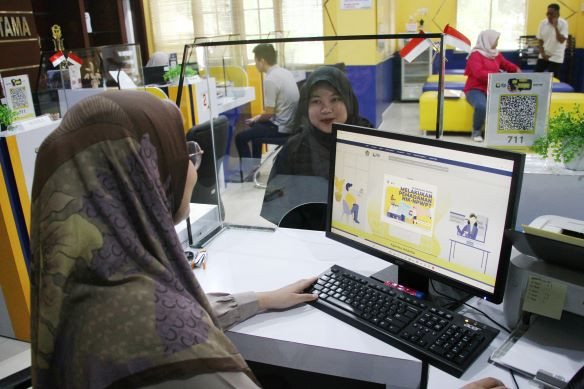Popular Reads
Top Results
Can't find what you're looking for?
View all search resultsPopular Reads
Top Results
Can't find what you're looking for?
View all search resultsDigitalization key to transforming core tax system
Indonesia’s core tax system is still far from the expected standard, reflecting the government's awkwardness and inability to effectively implement government digitalization.
Change text size
Gift Premium Articles
to Anyone
T
he core tax system developed by the government with a budget of Rp 1.3 trillion (US$79.96 million) is a significant step toward improving the efficiency of the national tax system. However, despite its great potential to improve tax administration, this system still faces various challenges, in terms technical, data integration and managerial terms. Compared with countries such as Singapore and several European nations, Indonesia’s core tax system is still far from the expected standard, reflecting the government's awkwardness and inability to effectively implement government digitalization.
Countries in Scandinavia such as Sweden, Norway and Denmark have long implemented a non-filing system, which allows taxes to be calculated automatically based on integrated data from various sectors, such as population data, banking, finance and economic transactions. In this system, manual reporting by taxpayers is not required, eliminating the potential for administrative errors and increasing tax compliance rates that approach nearly 100 percent.
Similarly, Singapore has a highly efficient digital-based tax system. The tax reporting process is conducted automatically and transparently, with intensive education from the government to the public about tax obligations and the benefits derived from such contributions. Germany and the Netherlands have also adopted similar systems using data integration to calculate tax obligations. This success is driven by efficient technology, strict oversight and transparency in managing tax data.
Indonesia should have the potential to follow the path of these countries. However, data integration across various sectors, including population data, finance and economic transactions, is still not fully optimized.
One of the main issues faced by Indonesia’s core tax system is downtime, which can disrupt tax processing and result in significant losses. For example, if the system experiences downtime for 30 minutes, with 30,000 transactions delayed and an average transaction value of Rp 500,000 each, the resulting loss would be Rp 15 billion.
This calculation represents the minimum economic loss, but when measured by company productivity, the loss would be greater than calculated, as the duration of downtime would be multiplied by the number of transactions and the average value of transactions occurring during the downtime.
However, is it possible that with 14.18 million taxpayers filing their Annual Tax Returns (SPT) in 2024, even a short downtime would result in a very large cost. These losses only cover the delayed transactions and do not include system recovery costs, maintenance and the impact on taxpayer confidence. Longer downtimes or more transactions delayed would only worsen these losses.



















